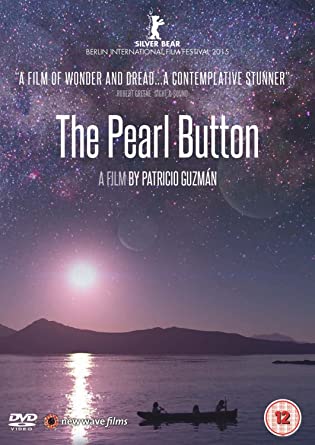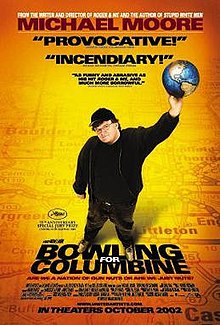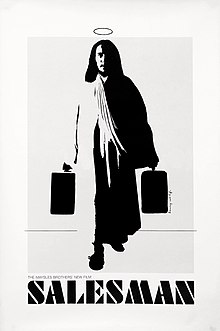“Portable, digital cameras, digital sound recording equipment and non-linear digital editing have had a very significant impact on documentary film.” How far has digital technology had an impact on your chosen documentary film? [20]
Essay Plan
Intro
The impact that digital technology has had on film since the 1990’s can be widely interpreted based on several different viewpoints. Whilst some filmmakers argue that the introduction of digital is a negative aspect of film such as the cinematographer Ellen Kuras who describes the pursuit of digitalising an image as giving the filmmaker “less control because we give away our product that anybody can manipulate”. Other filmmakers regard digital as something to be embraced such as George Lucas who prefers to edit and shoot digitally so he has the option to alter the look of the scene more quickly.
Main Headings
Introduce The film and themes kim Longinotto presents – Sisters in Law is a documentary film By Kim Longinotto, the critically acclaimed documentary filmmaker who is known for her works such as Pink Saris (2010) and Rough Aunties (2008) that focus on female oppression and giving women a voice in a patriarchal society. Sisters in Law focuses on a small courthouse in Cameroon where a State Prosecutor and Court President work together to help women in their village who feel as though they don’t have a voice.
Shooting- easier on digital than film stock, portable, transferable, on and off, left on for long time, cheaper means multi cam
Editing- cost, damage, travel home
Pre-production – cheaper camera and storage – low budget for the film and no editing table in africa
– production – smaller means less obtrusive and portable – not a lot of space in the village, Amina divorce trial against her husband for which he was fined 6 months imprisonment or 20,000 francs
– long takes causes less disruption and left on for a long time and turn on and off on demand – court trial of lum rose against manka for beating her for which she was jailed for a combined 4 years with hard labour on 3 counts
– cheaper camera means multi cam is available – sonita rape trial for which the accused was charged with 9 years imprisonment with hard labour
Post-production – less chance of being damaged and can be reviewed immediately so they don’t have to bring all the way back to uk – editing table too large for their residence
– the cost of copying is far less than film stock for small budget film – film had a budget less than $500,000 dollars but was screened at over 120 different film festivals
Conclusion
My personal belief is that the heavy influence of digital technology on Longinotto’s Sisters in Law has had a beneficial effect on the overall production on the film, causing it to have a more impactful effect on the audience due to its more crisper and sharper colours that aids Longinotto’s aims of empowering women and girls to stand up for their rights in a patriarchal society.
Essay
The impact that digital technology has had on film since the 1990’s can be widely interpreted based on several different viewpoints. Whilst some filmmakers argue that the introduction of digital is a negative aspect of film such as the cinematographer Ellen Kuras who describes the pursuit of digitalising an image as giving the filmmaker “less control because we give away our product that anybody can manipulate”. Other filmmakers regard digital as something to be embraced such as George Lucas who prefers to edit and shoot digitally so he has the option to alter the look of the scene more quickly.
Sisters in Law is a documentary film By Kim Longinotto, focusing on female oppression and giving women a voice in a patriarchal society. Sisters in Law focuses on a small courthouse in Cameroon where a State Prosecutor and Court President work together to help women in their village who feel as though they don’t have a voice. Longinotto positions the audience as a spectator at the court trial of four different women who have experienced suffering such as rape and domestic violence.
The pre-production of a film is crucial to get right as it ensures that further stages of production run as smoothly as possible without increased costs or lack of necessary equipment that aid the overall aesthetics of the film. The introduction of digital technology has meant that securing a camera with enough storage has become far easier as digital cameras are cheaper to purchase than film cameras whilst storage is practically free and a resource that easier to attain than film stock and undemanding in its ability to be loaded into the camera. Sisters in Law had a budget of under $500,000 for all stages of production including travel and gear, meaning that the availability of digital cameras allowed her to gain access to equipment that otherwise would have been out of Longinotto’s budget.
There are several noticeable advantages to the films production due to the use of digital technology. The smaller and more compact size of the digital cameras in comparison to the large film cameras means that the film crew would have been less obtrusive and therefore the people around them would have been encouraged to behave more naturally which helped to depict the feelings of various real people in the film in order to engage with the audience more constructively. In the small town in Cameroon, it is clear that there is not a lot of space in the village which would have meant positioning cameras would have been difficult such as in Amina’s divorce trial against her husband who has pleaded guilty to beating her for which he was fined 20,000 francs or 6 month imprisonment. Filming this seen using digital cameras meant the people present wouldn’t have felt out of place and are were more likely to behave in a natural way. Portability of the cameras has also improved what the audience is able to see. Unlike film cameras, due to their small size, digital cameras are more portable as they are lightweight which means that following certain people or events is possible as the filmmaker is capable of freely moving with their subjects without interfering. This advantage is present in the scene in which Manka and her uncle walk towards the man who originally found Manka beaten. The camera follows them from behind as they walk to give the impression we are walking with them so as to immerse us; a technique made easier with digital technology as the camera doesn’t have to remain still.
Long takes are utilised due to the digital technology available. Whilst film cameras are capable of shooting for at least 15 minutes before the film stock has to be swapped out, certain events can take longer to film and therefore it is necessary to swap out the film stock which can be disruptive to natural events and actions that are being focused on. Furthermore, a digital camera has the ability to be turned on and off immediately which means that the filmmaker can choose when to start filmmaking with a greater ease so as to not miss anything important that otherwise might have been missed if using a film camera. In the court trial of Lum Rose, accused of beating her niece with a hanger repeatedly which caused permanent scarring across her body, the trial would have spanned over a long period of time and therefore if using a film camera, multiple changes would have had to be made; however, because of the digital camera, Longinotto can follow the events in her trial as Rose is jailed for a combined 4 years with hard labour without disrupting court proceedings.
The introduction of digital technology has meant that cameras often start at the same prices as film cameras before decreasing in price over time which has meant that the possibility of a multi-cam setup is more realistic for low budget films. During the Sonita rape trial for which the accused was charged with 9 years imprisonment, several cameras are used to focus on specific people and how they react to the events. Two focus on each of the sisters in law whilst several other focus on Sonita, the accused and those witnessing the proceedings. This gives Longinotto the flexibility to choose who she wants to show the actions of to gain a response from the audience and to create a better understanding for what is happening.
Post-production with film stock is risky business as it can become corroded and irretrievable, forcing the filmmaker to ditch the scene or re-film a scene which isn’t possible in this observatory documentary as events are being shown as the occur in real time. Images with digital on the other hand are far less likely to be damaged and can be backed up easily, also giving the filmmaker the opportunity to review the images at the time of filming. An editing table would have been far too large and costly to transport to Cameroon, meaning that Longinotto would have been forced to return from Africa with her film stock in the hope that it had survived with the potential risk that she might have lost several key parts of the film that couldn’t be replaced. Digital removes this risk, ensuring that the filmmaker can be confident that the editing process can be smooth and painless.
Lastly, the cost of copying film stock differs greatly from digital, working out at roughly $1500 for film stock to be reproduced in comparison to $150 for digital film. The films small budget would have struggled to keep up with the high demand from theatres and film festivals, screening at over 120 different festivals would have been costly on their budget, but with digital proving cheaper, that money can be better spent of more essential gear.
My personal belief is that the heavy influence of digital technology on Longinotto’s Sisters in Law has had a beneficial effect on the overall production on the film, causing it to have a more impactful effect on the audience due to its more crisper and sharper colours that aids Longinotto’s aims of empowering women and girls to stand up for their rights in a patriarchal society.
Essay – Second Attempt
The impact that digital technology has had on film since the 1990’s can be widely interpreted based on several different viewpoints. Whilst some filmmakers argue that the introduction of digital is a negative aspect of film such as the cinematographer Ellen Kuras who describes the pursuit of digitalising an image as giving the filmmaker “less control because we give away our product that anybody can manipulate”. Other filmmakers regard digital as something to be embraced such as George Lucas who prefers to edit and shoot digitally so he has the option to alter the look of the scene more quickly.
Sisters in Law is a documentary film By Kim Longinotto, focusing on female oppression and giving women a voice in a patriarchal society. Sisters in Law focuses on a small courthouse in Cameroon where a State Prosecutor and Court President work together to help women in their village who feel as though they don’t have a voice. Longinotto positions the audience as a spectator at the court trial of four different women who have experienced suffering such as rape and domestic violence.
Pre-production when is an important aspect of filmmaking as it ensures that further stages of production run as smoothly as possible without increased costs or a lack of necessary equipment that will aid the overall aesthetics of the film. The introduction of digital technology has meant that securing a camera with enough storage for long shoots has become far easier as digital cameras are cheaper to purchase than typical film cameras whilst storage is practically free and is a resource that’s much easier to attain than film stock and undemanding in its ability to be loaded into the camera. Sisters in Law had a budget of under $500,000 for all stages of its production including travel and gear, meaning that the availability of digital cameras allowed Longinotto to access equipment that otherwise would have been out of budget and make certain the film was completed according to the parameters of the established budget.
Digital technology has allowed for many advantages when working on set, such as the far smaller and more compact size of a digital camera in comparison to larger film cameras. This means that the film crew would have been less obtrusive when shooting and therefore the people around them would have been encouraged to behave more naturally, helping to depict the feelings and emotions of various real people in the film in order to engage with the audience more constructively as they would forget that the camera was present, allowing for a more realistic depiction of the participants’ lives as it would encourage more honest and less guarded responses that help to build an accurate representation of a persons character. Located in a small town in Cameroon, space in the village would have been limited due to the tightly-packed housing and dense population which would have meant that positioning large film cameras would have been difficult, especially during scenes such as Amina’s divorce trial against her husband who pleaded guilty to beating her and was fined and imprisoned as filming this scene using digital cameras would have resulted in the people present acting naturally and not feeling out of place which would have been the came is more imposing camera setups were utilised, promoting behaviour that is realistic and innate.
Camera portability has also contributed towards what the audience are able to view on screen. Unlike large and heavy film cameras, digital cameras are much more portable as they are lightweight and small which gives the opportunity for following certain people or events as the filmmaker is capable of freely moving with their subjects without interfering which wouldn’t have been possible when using a stationary film camera. This advantage is present in the scene in which Manka, a young girl who was beaten, and her uncle walk towards the man who had originally found Manka after she was beaten. The camera follows them from behind as they walk, giving the audience the impression that they are walking with them so as to make the scene immersive which would evoke stronger emotions as they react to the visual imagery. This filmmaking technique was made easier with digital technology as the camera doesn’t have to remain still as would have been the case with a film camera.
Long takes are used in the film due to the digital technology that was available to them. Film cameras are capable of shooting for at least 15 minutes before the film stock has to be swapped out for another and due to the nature of documentary filmmaking, longer takes are typically necessary compared with feature films as certain events can take longer and swapping out the film stock in the middle of the event would be disruptive to natural events taking place and for the audience watching. Furthermore, a digital camera has the ability to be turned on and off immediately, meaning that the filmmaker can choose when to start filming with greater ease so as not to miss anything important that otherwise might have been missed when using a film camera. In the court trial of Lum Rose, accused of beating her niece and causing permanent scarring across her body, the trial would have spanned over a long period of time and therefore if a film camera was utilised, multiple changes would have been forced upon the filmmaker, however, because of the use of a digital camera, Longinotto has the ability to follow the events in her trial and show the process of the victim getting justice, as Rose is jailed for 4 years with hard labour, without disrupting the court proceedings.
The introduction of digital technology has meant that cameras often start at the same prices as film cameras before decreasing in price over time, resulting in the possibility of a multi-cam setup becoming a more realistic option for low budget films. During the Sonita rape trial, several cameras are used to focus on specific people and how they react to the events unfolding. Two cameras focus on each of the sisters in law whilst several others focus on Sonita, the accused and those witnessing the proceedings, giving Longinotto the flexibility to choose who she wants to show at specific moments of time when it comes to post-production which allows for a greater response from the audience and helps to create a better understanding of what is happening in the proceedings.
Post-production with film stock is very risky as it can become corroded and irretrievable, forcing the filmmaker to ditch the scene or re-film a scene which isn’t possible in this observatory documentary as events are being shown as they occur in real time. Images produced digitally on the other hand are far less likely to be damaged and can be backed up easily and without great expense while also giving the filmmaker the opportunity to review the images at the time of filming. An editing table would have been far too large and costly to transport to Cameroon, meaning that Longinotto would have been forced to return from Africa with her film stock in the hope that it had survived with the potential risk that she might have lost several key parts of the film that couldn’t be replaced. Digital removes this risk, ensuring that the filmmaker can be confident that the editing process can be smooth and painless.
Lastly, the cost of copying film stock differs greatly from digital, working out at roughly $1500 for film stock to be reproduced in comparison to $150 for digital film. The films small budget would have struggled to keep up with the high demand from theatres and film festivals as the film was screened at over 120 different festivals, but with digital proving cheaper than film, that money can saved and spent in areas that will improve the filmmaking process rather than distribution such as essential filmmaking equipment.
The large influence of digital technology on Longinotto’s Sisters in Law has had a hugely beneficial effect on the overall production of the film, resulting in it having a more impactful effect on the audience due to its crisper and sharper colours that aids Longinotto’s aims of empowering women and girls to stand up for their rights in a patriarchal society.






